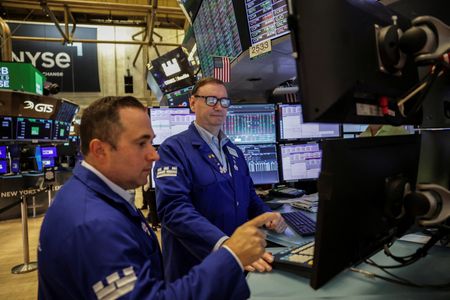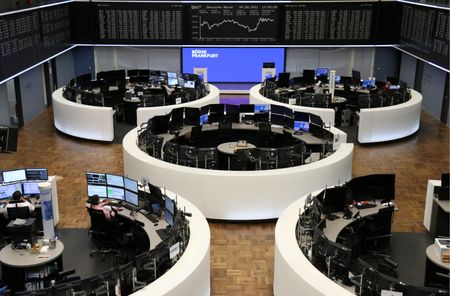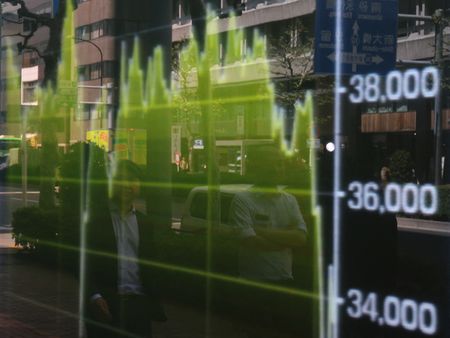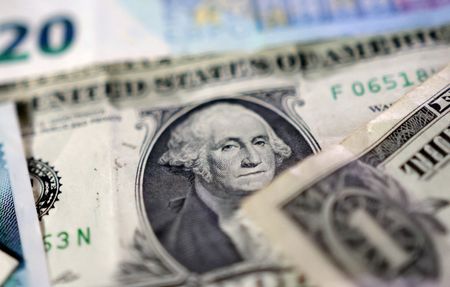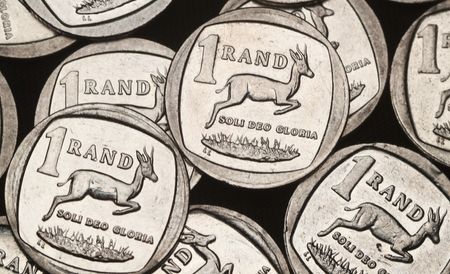By Sinéad Carew and Elizabeth Howcroft
NEW YORK/PARIS (Reuters) -Markets turned volatile on Wednesday with equities losing steam, the dollar selling off sharply and gold prices spiking higher on a report that U.S. President Donald Trump is looking to fire the Federal Reserve chair, though investors pared back bearish bets when Trump said he was not planning to do so.
U.S. Treasury two-year yields dropped sharply after Bloomberg reported that Trump is likely to fire Federal Reserve Chair Jerome Powell soon, citing an unidentified White House official.
Such reports are not true, Trump said, adding that it was “highly unlikely” that Powell would be fired.
Trump did talk with some Republican lawmakers about firing Powell, he said, but said he is more conservative about his approach to the question than they are.
The U.S. Federal Reserve has been keeping interest rates steady as it monitors the inflationary impact from tariffs, which Powell expects to become clearer in the summer.
But Trump has railed against Powell for months about not cutting rates sooner, prompting investor concern about whether the central bank’s independence could be eroded.
“Given the passage of the one Big Beautiful Bill, given the very dramatic increase in the deficit and the substantial increase in the debt ceiling, we’re paying close attention to Treasuries to see at what point does the bond market, more broadly, begin to push back, especially if the independence of the Federal Reserve is called into question,” said Don Calcagni, chief investment officer at Mercer Advisors.
On Wall Street at 12:07 p.m. the Dow Jones Industrial Average rose 46.41 points, or 0.11%, to 44,069.70, the S&P 500 fell 1.51 points, or 0.02%, to 6,242.25 and the Nasdaq Composite fell 17.99 points, or 0.09%, to 20,659.97.
MSCI’s gauge of stocks across the globe fell 0.75 points, or 0.08%, to 919.50 while the pan-European STOXX 600 index fell 0.57%,
The reports about Powell overshadowed an unexpectedly tame inflation reading. U.S. producer prices were unexpectedly unchanged in June as an increase in the cost of goods due to tariffs on imports was offset by weakness in services. The unchanged reading in the producer price index for final demand last month followed an upwardly revised 0.3% rise in May. This was after Tuesday’s U.S. consumer price data for June pointed to higher costs for some goods.
“It’s very early innings when determining whether or not and to what extent tariffs are going to impact inflation,” said Calcagni, noting that while investors wait to see where the Trump administration ultimately sets tariff levels, inflation numbers are also being muddied by the depletion of goods in stock at companies which had built up higher than usual inventories in anticipation of the new import taxes.
In currencies, the dollar index, which measures the greenback against a basket of currencies including the yen and the euro, was last down 0.26% to 98.36.
The euro was up 0.33% at $1.1637 while against the Japanese yen, the dollar weakened 0.49% to 148.14.
Sterling strengthened 0.38% to $1.343. Earlier data showed that Britain’s annual rate of consumer price inflation unexpectedly rose to its highest in over a year.
In Treasuries, the yield on benchmark U.S. 10-year notes fell 1.8 basis points to 4.471%, from 4.489% late on Tuesday while the 30-year bond yield rose 1.3 basis points to 5.0303%.
The 2-year note yield, which typically moves in step with interest rate expectations for the Federal Reserve, fell 5.7 basis points to 3.902%, from 3.959% late on Tuesday.
Oil prices were lower, with Brent crude futures around $68.5 a barrel, as signs of stronger Chinese crude consumption were outweighed by investor caution about the wider economic impact from U.S. tariffs.
U.S. crude fell 0.83% to $65.97 a barrel and Brent fell to $68.16 per barrel, down 0.8% on the day.
Gold prices added to gains after the Powell reports with the safe haven commodity bolstered by persistent Middle East conflict and uncertainty over tariffs.
Spot gold rose 0.66% to $3,344.66 an ounce. U.S. gold futures fell 0.01% to $3,329.50 an ounce.
(Reporting by Sinéad Carew, Elizabeth Howcroft. Editing by Andrew Cawthorne, Mark Potter and Deepa Babington)

